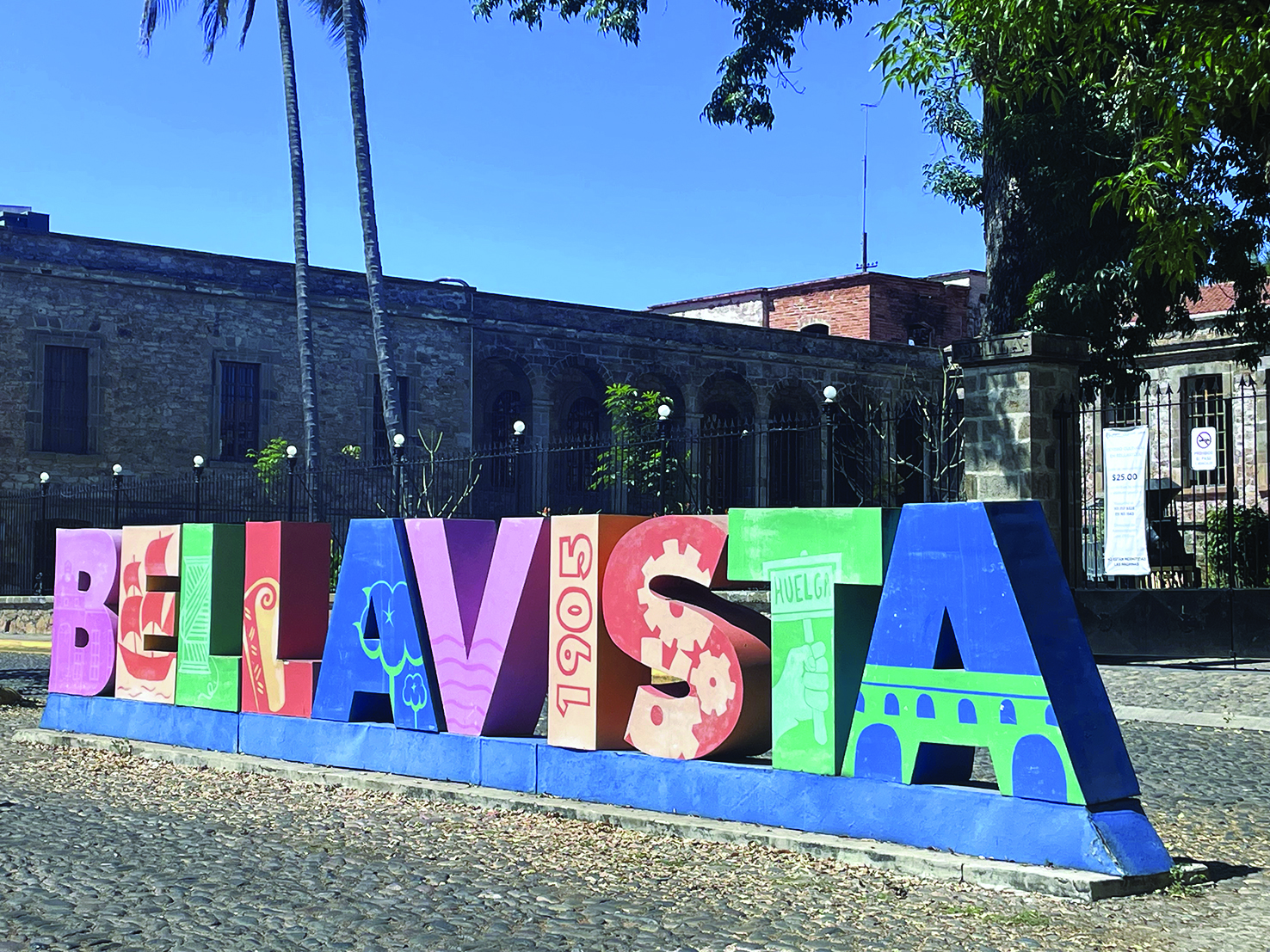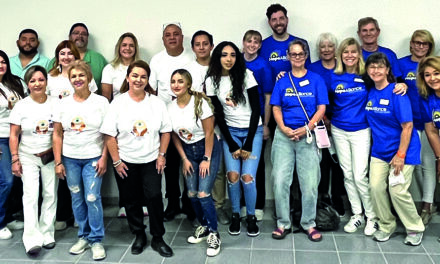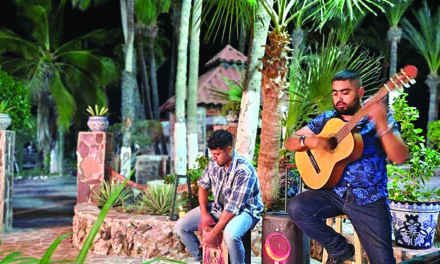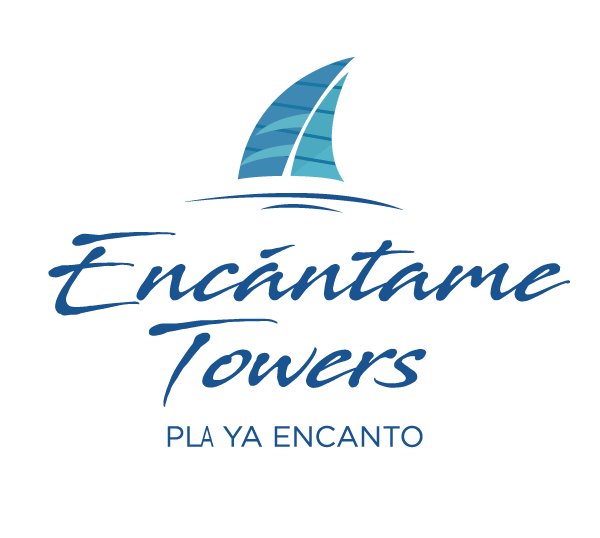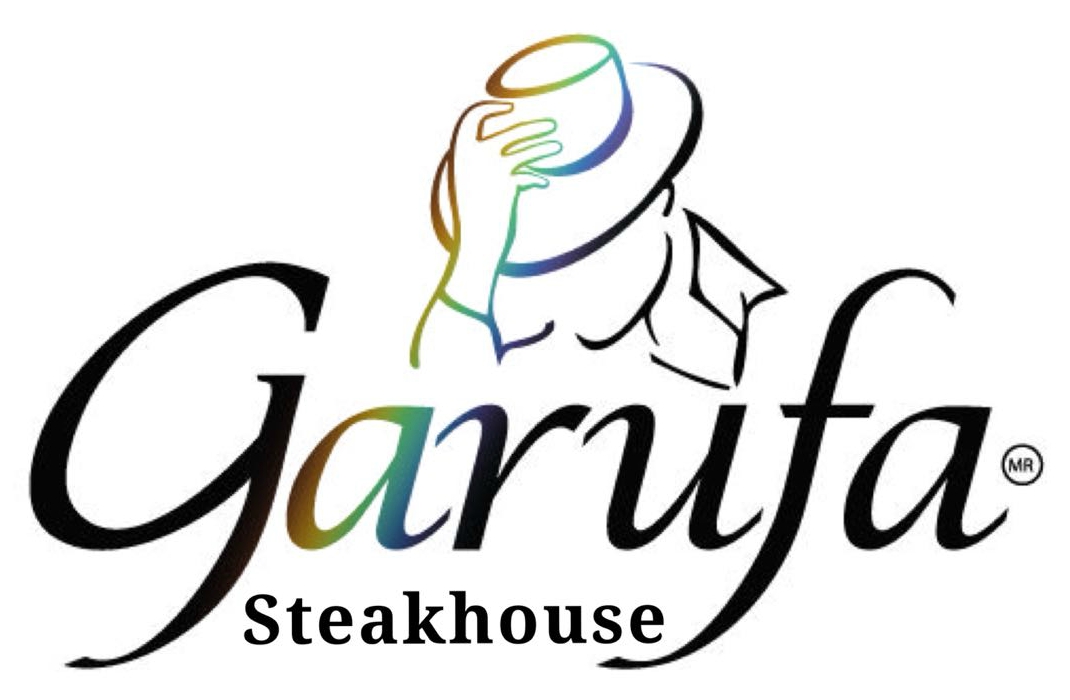I have long wondered how it would be to have friends act as a tour guide to their birthplace in a foreign country. In late March we experienced that, going to the “home” of two friends from the same area of Mexico. Our close friends here in Peñasco, Dr Luis Garcia, DDS and his wife Zehila Nuñez, are both from the State of Nayarit, even though they romantically met in Peñasco years ago. It is called the Riviera Nayarit for its stunning world class beauty. Nayarit hugs the rugged Pacific Coast just north of the state of Jalisco and the popular city of Puerto Vallarta. We have visited Puerto Vallarta many times over the last 40 years, watching it become more and more of an international destination. Personally, we love the small towns and more remote areas of Mexico for the food, history, people and immense variety of flowers, trees and fruit.
We wondered how it would be staying in Bellavista, the small home town of our friends and culminating with going to the “La Boda”, wedding, of their nephew in Tepic, capital of the state of Nayarit. In a word it was “WOW”. Really, we couldn’t stop saying wow. Wow to food, Wow to huge trees covered in flowers, Wow to the hospitality of the people of the quant town of Bellavista where we stayed with the family, too many wow moments. Arriving late at night on a commercial flight from Tijuana to Tepic, we immediately went out to a local taco stand. It was something that happens around 7pm all over the small towns, the squares and side streets, the sun goes down and all of a sudden, they are populated with taco, hamburger and exquisitos (a Mexican version of a hot dog wrapped in bacon) stands, as well as ones serving crepes and churros. Groups of hungry people waiting patiently at each to receive their plate of selected savory or sweet dishes.
As we drove out of the city of Tepic, we became aware of how truly dark it is. We traveled under an impossibly dark sky studded with diamond stars through rolling hills in the unpopulated countryside. Soon we are bumping along the narrow, winding, cobblestone streets of the dimly lit village of Bellavista. And I mean narrow streets, so narrow that as much time was spent backing up for another car to pass by as there was forward progress. Charming! Such a step back in time exploring our hosts’ hometown. There is a welcoming square near the two ancient stone churches, one still holding Mass and one with trees and vines growing out the roof. We are visiting in the dry season, the summer rains contributing to the vigorous vegetation growing out of every nook and cranny. Around the corner from the square with its trees and benches full of local people, young and old, sits the textile factory built in 1814 where 350 local, mostly indigenous people worked 14 to 16 hour shifts every day. The harsh conditions of the factory culminated in what is reported to be the first workers’ strike of the 20th Century, a precursor of the general outbreaks that lead to the Mexican Revolution. Wow, real history in this sleepy little village.
We wake to a bright sun and our hosts inquiring if we want to walk from the family home to breakfast. It was such a great stroll. No cars could navigate this thoroughfare. Dr Luis has the arm of his mother showing touching attention to her as a beloved son. We make our way up hills, around trees growing out of the cobblestones, across an ancient narrow 2-foot-wide metal bridge over a small running stream, upstairs and out next to the no roof 300-year-old church. We walk past the square, the factory, which is now a museum, to a low-slung building where we are told the factory workers lived. Under the canopy of impossibly huge tropical trees there are tables packed with people having breakfast at the Los Telares Restaurant. Everyone seems to know each other and offer warm greetings. A real small town. Reservation, we are asked? Nope. Ah, but wait, the servers know the family that has lived here for 4 generations and find us a table for 12 (we have grown in number as we walked along) inside the gorgeously preserved stone building. It is lovely. Adorned with Mexican folk art, colorful paintings, and artifacts from the factory days, we are seated near the amazing smells of the open kitchen.
On the extensive menu we find amazing local specialties and settle on sharing chilaquiles with freshly made tomatillo sauce, chicken, crema and an omelet with more vegetables, chiles and spices. It was all wonderful. Voted the best chilaquiles of my life, so far. We plan to come back for a dinner. Wandering back home we pass the primary school where the children are all dressed up, singing and putting on a spring pageant, their parents joyfully watching the fiesta. We notice all the little tiendas, super small grocery stores, on the front of someone’s house, selling an amazing array of fruits, vegetables, and necessities. It becomes a great past time anytime something is needed at the grandmother’s house, to volunteer to be the one to navigate the narrow cobblestone streets, up the stairs, across the metal bridge, more stairs and to the store. Really fun. This just the first morning, the beginning of our Nayarit adventure of explorations and food.
Over the course of our days leading up to the wedding we visited another of Mexico’s Pueblo Mágicos at San Blas on the Pacific Coast. The Riviera Nayarit lives up to its name with stunning beaches, quant towns, great seafood and tropical weather. My partner and I actually had a great trip here 11 years ago when we spent two weeks on this coast. We stayed in a small town called Atacama and another Pueblo Mágico, Sausalito.
We want to have fresh green coconuts and oysters on our day trip to the Pacific Coast. Atacama is the place we are told by our local hosts. And oh gosh are they right. We stop at “Martha’s Restaurant”, which like most places in this area, is the shady yard under a huge banyan tree set with tables. We are served sweet, green coconuts, tops violently lopped off by the grandpa wielding a very sharp machete. Off go the tops and in goes a straw. When we have finished the sweet juice, the coconuts are collected, halved with another swift machete whack, then the soft coconut meat scooped out with a spoon. Another of my personal favorites. Our hosts also order fresh oysters on the half shell, as well something called a “balazo” or shot. This is a new gastronomical treat for us. I watch Martha take a tall shot glass squeeze an inch of fresh lime into it, then 2 inches of spicy clamato juice and chopped fresh raw oysters. Topped with a cucumber slice and chile tajin, they are amazing. Another round was ordered, and another and I lost count. Partner is still talking about them.
We are back here in Peñasco now and are heading out to the local osteria, El Barco a little ways off the Caborca road with a bottle of Clamato juice to make some balazos with the oysters there. For us, El Barco offers the best local oysters, shrimp quesadillas and ocean views overlooking the estuary here in Peñasco.
Another day during our trip, our knowledgeable about all things cool and delicious in Nayarit friends, whisk us off to Laguna Santa Maria Del Oro. We wind along through the lush green countryside to the other side of the City of Tepic, through fields of tall soft green sugar cane, avocado and mango orchards, juxtapositioned against the sharp blue of the agave fields grown for tequila. A trip to the town of Tequila is slated for our next time here. We arrived at the edge of a volcanic caldera, or some websites say it was a meteorite impact. It is lovely. A winding 15- minute drive takes us down a thousand feet to the level of the verdant lagoon. On the way down we begin to see the shore is lined with palapa restaurants, giant flowering trees and gorgeous homes. We hop a water taxi for the 20-minute ride around the lagoon, ogling the amazing lush gardens, palatial homes and the turquoise waters. Along the way we pass by a dozen or so cool, inviting restaurants jutting out over the water. We try to remember which one looks the best. Back on the shore we settled in for beers, local favorite Chicharron de Pescado (crispy fish strips) and aguachile. Our Nayarit friends remind us why they like meeting us at the El Buzo Restaurant near the railroad tracks when we are in Peñasco for Nayarit style food from chicharrónes to a specialty ceviche called the “Nayarit” with mango, green apple and shrimp, to the “Rusa” drinks, a typical local drink, all served on the signature rustic clay pottery dishes imported from the State of Nayarit. Roberto Ortega, owner of El Buzo serves fresh seafood Nayarit style.
After all of our great days exploring the countryside and amazing food of Nayarit, finally the wedding day dawns. The whole family piles into 3 cars, with fancy dresses and suits covering everyone but the driver’s lap. We are staying the night in the big city of Tepic. We pile out of the cars in front of the gorgeous old carved façade of the Hotel Real de Don Juan dangling the fancy clothes. The inside of the stately old hotel is even better than the outside for this lover of old Mexican art, carvings, furniture, etc. So many gorgeous details. The vanities in the rooms made out of golden onyx, carved Cantera stone angels stand watch in all the hallways and amazing food in the lobby restaurant is served by a smiling waiters. The family has a series of rooms together and all afternoon the hallways are a buzz with activity, women helping each other get ready, the men with shots of tequila to shore up the groom.
Soon it’s the appointed time to pile back in the cars and this time not wrinkle the suits and fancy dresses that are now adorn our bodies. We meet at the 3rd floor elevators and pile in. 10 people in fancy wedding attire, including the groom and the abeula. Mistake! We lurch to a halt with doors jammed shut. It is 85-degrees, humid, no ventilation and too many people crammed into the elevator. Our fault for sure, too many bodies. Finally, 25 minutes later, after numerous calls and a lot of, o’ dear, shall I say it, sweating in the suits and fancy dresses, we are rescued, late for the Wedding Mass across town. We pile back into the cars and zoom off. Mercifully the priest is also late.
It was a lovely La Boda, my first official Mexican Wedding. Beautiful old church bedecked with carvings, stained glass and overflowing with vibrant flowers. The service in Spanish brings tears to many eyes. The childhood sweethearts witnessing their lifelong devotion in front of family and friends. There was an old-fashioned feel to the celebration of love, commitment and family. The wedding guests piled out of the church against the incoming tide of the congregation for the next Mass. We gather in the perfect evening light to celebrate the first married kiss with big Mexican sparklers. I am afraid all these people so close together are going to light each other on fire. A second disaster after the elevator mishap. Mercifully we all survive the blazing sparks and somehow shove everyone into the cars and make it safely over to the reception at the lovely Don Juan Real Ballroom. The pretty women look like movie stars in gorgeous flowing gowns, the men handsome in their tailored suits. It was a great fiesta full of local flavor, colors, live music, and dancing. Everyone sending blessings of a life of sweet sharing and heartfelt connections to the bride and groom. All the celebrating shook the old hotel till dawn.
After room service coffee, a luxury that we usually forgo due to crazy high prices, this cup o’ Joe was $2, we managed to find room for another memorable breakfast in the hotel restaurant overlooking the square. I tell my partner it could be any old European hotel with tables set out onto the sidewalk among the old colonial style buildings. It was a magical breakfast beginning with an amazing assortment of sweet pastries, coffee, tea, fresh squeezed juices and then onto the Mexican specialties of savory chilaquiles, omelets and fresh fruit.
On the way back to the family home in Bellavista, we make one last pilgrimage to a local site with a visit to the Huichol village of Zitakua perched on a hill overlooking Tepic. I am familiar with the indigenous people of this area of Mexico, as well as their stunning and colorful artwork. They are world renowned for their bead work, yarn paintings, and embroidery representing their spiritual beliefs and traditions. One of their signature pieces is a four corned yarn sculpture that is called an Ojo de Dios or God’s Eye. The day we visited this hilltop Huichol community area there were several families selling their colorful handmade art under the banner of streamers and Ojo de Dios fluttering in the breeze. The fluttering forms making a continuous prayer offering to their principal deities of Corn, Blue Deer, Peyote and the Eagle, all descended from the Sun God. The Huichol have been able to carry their sacred native beliefs and creativity into a modern world incorporating their ancient traditions and art using more readily available materials in the brightly colored yarns and beads that they now use instead of the painstaking process of using bone and naturally died objects. This hilltop village gathering was an inspiring display of these spiritual people, their community and art.
Later in central Tepic we stroll through a modern, what I would call “fancy”, gallery of more of Huichol art: Large animal sculptures adorned with beads, priced in the hundreds to thousands of dollars and multitudes of the colorful Ojo de Dios are on display. The Ojo de Dios is popular as a spiritual tool that is believed to allow God to keep a protective eye on the people. It contains many symbolisms including the center representing God’s Eye, the four ends of the center sticks representing the four cardinal directions and the basic elements of earth, water, wind, and fire. I find them mesmerizing. I remember as a child we made them out at Cholla Bay at my parent’s old trailer out of two sticks and yarn. The native Huichol weavings are stunning compared to our childish ones.
We had an amazing trip made extra special by our dear friends sharing of their ancestral home, family, traditions and of course, delicious food. So many WOW moments. We are planning to stay for 2 weeks next time when we continue exploring and adventuring in the magic of the Riviera Nayarit.
The Museum of International Folk Art has directions for making your own Ojo de Dios at internationalfoldart.org.
To find out more about Tepic, Nayarit, Santa Maria De Oro and Bellavista check out https://www.mexicotravelandleisure.com/travel-guide/santa-maria-del-oro-nayarit/ and https://pueblosmagicos.mexicodesconocido.com.mx/nayarit/.






